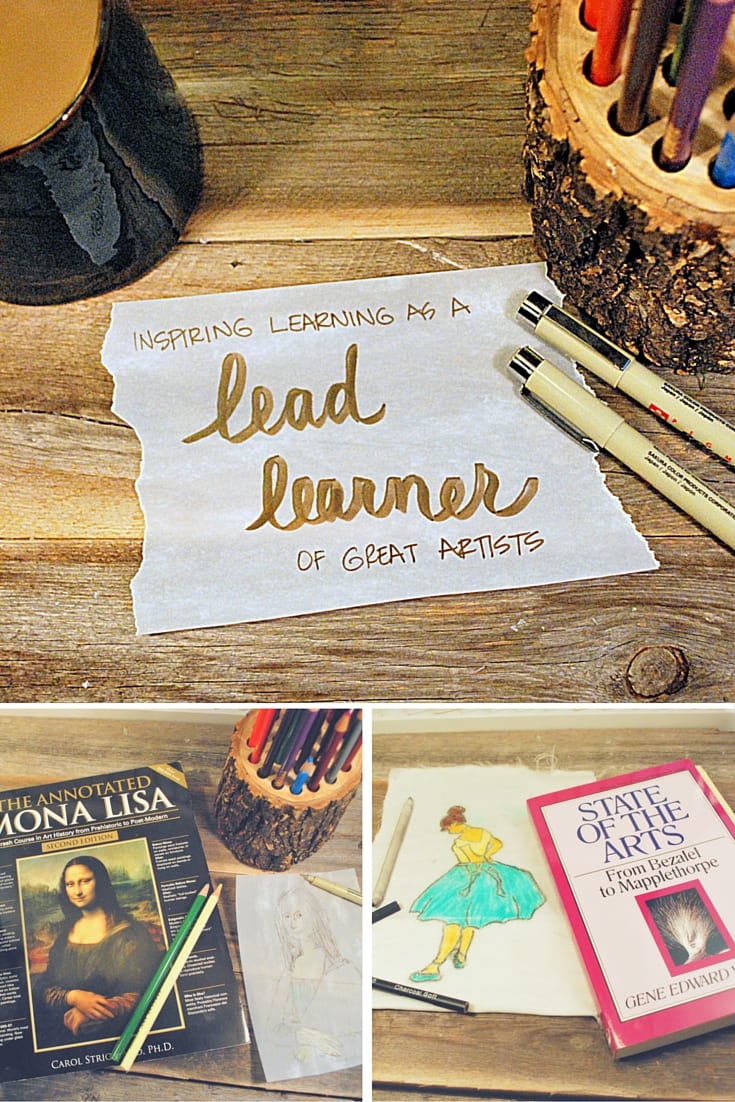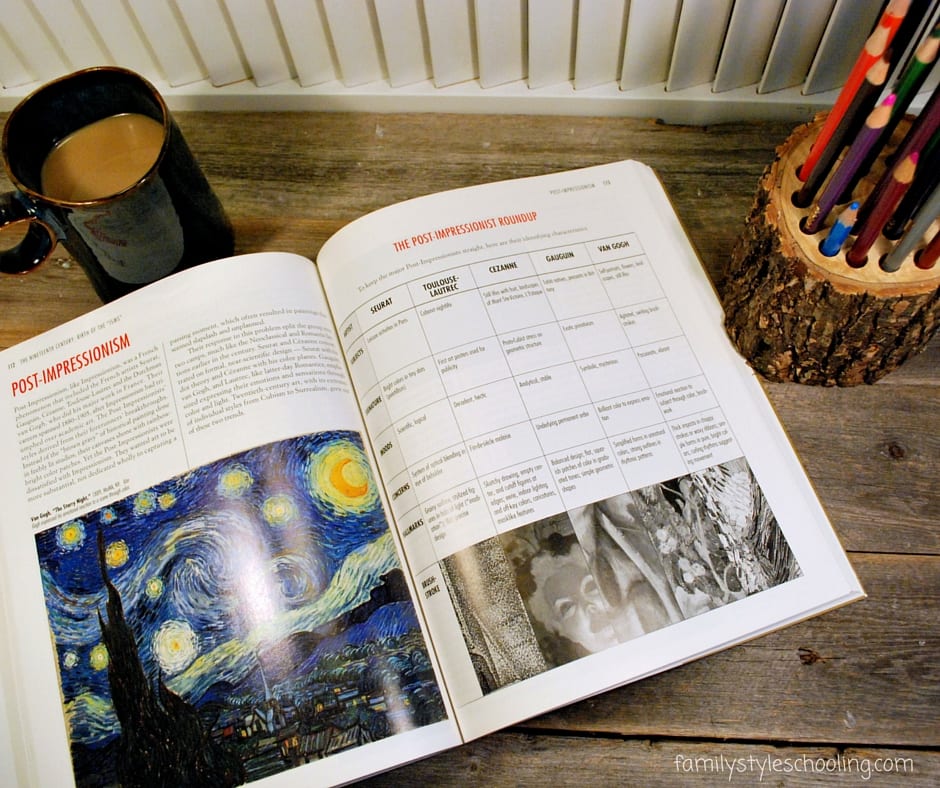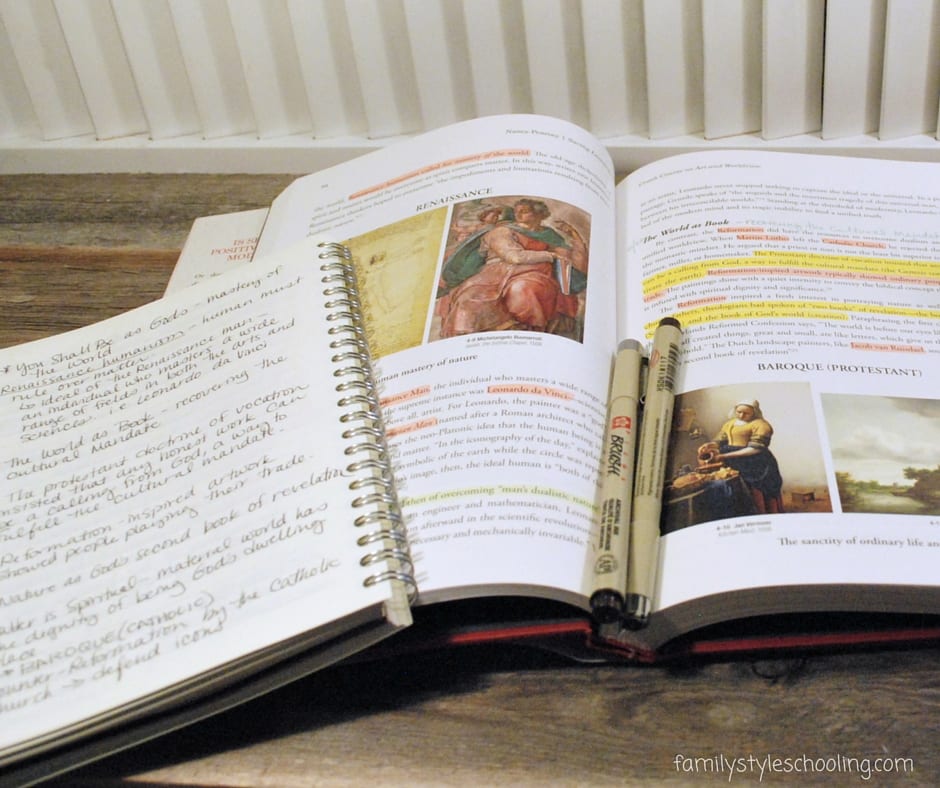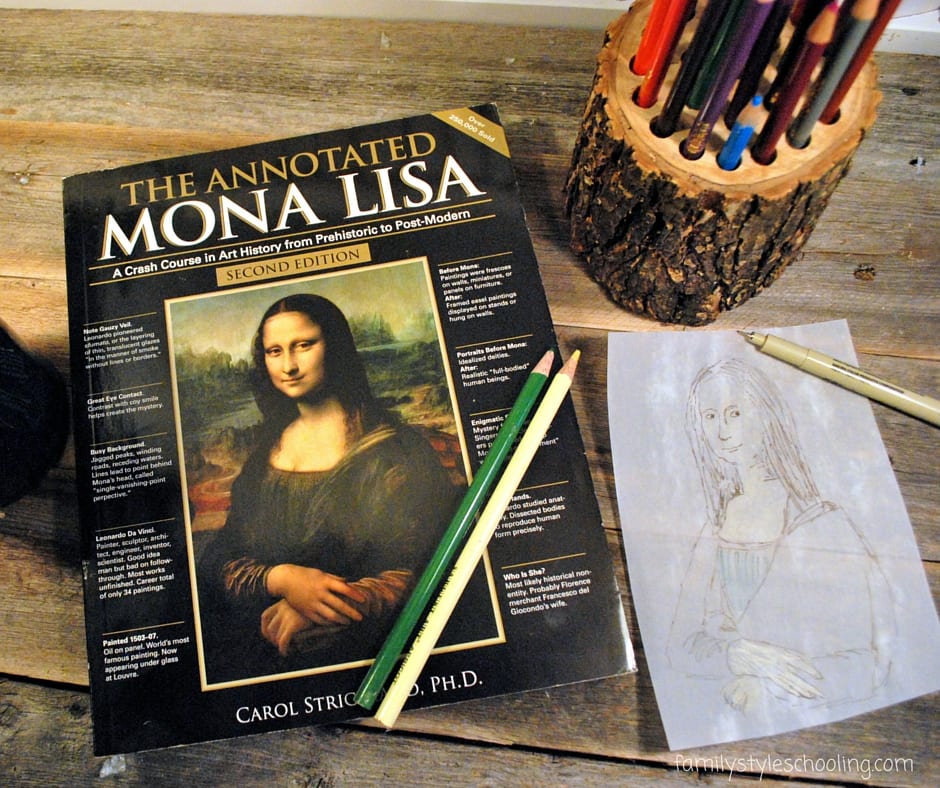Being a Lead Learner of Great Artists
Christmas is over, January strikes, and the desire to be a lead learner seems nowhere in sight. There is nothing harder than getting back into the groove of learning after a holiday break. Unlike starting in the fall, the freshness of a new school year doesn't exist to propel you into another semester of learning. Likewise, the weather is cold and bleak, almost as if it were begging you to stay in bed longer and avoid the responsibilities of life for one more day. In times like this, I soak myself in good books and let the joy of learning overflow into my relationships with my kids. If I can demonstrate what a learner looks like my kids might imitate me, and they might not. Either way, I become a better teacher by continuing learning in a way that restores my soul.

This post may contain affiliate links. See my full disclosure policy for more details.
5 Strategies to Becoming a Lead Learner
1. Curate a Library of great sources
One of my favorite places to go is used book stores. When I go, I have a few types of books I'm always looking for, and resources for artists is at the top of my list. Once you get an idea for authors or book series that are worth having on your shelf, you can keep a list of books to watch out for. Here are some of the books that I either own, or are on my list to find:
- Discovering Great Artists
- The Annotated Mona Lisa - A Crash Course in Art History
- Art for God's Sake - by Philip Ryken
- State of the Arts - by Gene Edward Veith
- Giotto (Getting to Know Great Artists) by Mike Venezia
- Michelangelo (Getting to Know Great Artists) by Mike Venzia
- El Greco (Getting to Know Great Artists) by Mike Venzia
- Art that Changed the World by DK
If you don't have the funds (or space) to buy a bunch of books, go check out your local library. By soaking yourself in the stories of the lives behind the art, you'll start to develop a taste for the arts.
2. Start with the Grammar of the Artists

I love the Annotated Mona Lisa. When my husband studied at Dallas Theological Seminary, this book was a class text for A Christian View of Art. It's also one of the course books for our Classical Conversations Challenge II program. It does a great job of presenting the basics of the artists and their time period. One of the reasons that I have struggled with connecting to the history of anything in the past is the fact that I don't have a grasp of the basics. With a great source like this, I just need to be curious and seek out the answers to a few simple questions.
- Who was this artist?
- Who were their contemporaries?
- What was going on in the world when they were creating?
- Did they find fame before their death?
- How were they similar or different to another artist?
- Were they innovative or traditional?
- What was their worldview?
3. Integrate the Art with the Worldview

You can't understand great artists without looking at the philosophy of the time. Gene Veith's book is a great resource for laying out the thinking of the artists in each period of art. If you don't have time to read this whole book, just check out Chapter 4 - "A Walk Through the Museum". It's a wonderful chapter rich in information that will ignite a heart to pursue a deeper understanding of how artists express the thinking of the day.
If you're interested in reading further on this subject, Nancy Pearcy does a fantastic job of laying out the way art expresses a time period's worldview in her book Saving Leonardo. This book is not a quick read, but it is a worthy read. Highlight as you read and take notes. Subjects are not as segmented as I thought they were when I was growing up. You might be surprised to find that as you start learning about great artists, you're also learning history, philosophy, and science.

4. Imitate Great Artists - Get in touch with your creative side
One of the greatest ways to get excited about learning about the lives and works of great artists is to imitate their art. Start by tracing a famous painting, or recreating some of the techniques the artists were known for. The Discovering Great Artists book lays this out beautifully for you. Brandy over at Half-a-Hundred Acre Wood has also created some excellent projects that were inspired by great artists:
- A snowman El Greco style
- Making tempra paint like Giotto
- A fresco like Michelangelo
- Printmaking like Durer
- Renaissance art and Ghiberti
- Gold Leafing like Angelico

5. Soak in the Beauty
If you're just in one of those times of life where you feel like you can't even accomplish finding a book, much less reading and/or studying about the lives of these artists, then take some time each day to just sit and admire their work. Find some time to escape to a museum and experience the work up close. Better yet, take a few friends to the museum with you and encourage one another as you all pursue a greater understanding of the artwork. If this feels like a luxury you can't afford, remember that by reclaiming your own education, you will be a more effective teacher because you have the tools to inspire learning.
What are some of your favorite resources for learning more about the lives of the great artists?
Betsy Strauss is an unexpected homeschooler, mother of three, who is in a relationship with a sweet man for life. She loves reading books, drinking coffee, and learning anything with her kids.


Great list of resources! And I love the pretty photos.
Just stumbled on this website and am thankful for the encouragement I find here. Co-CC-homeschooler. <3